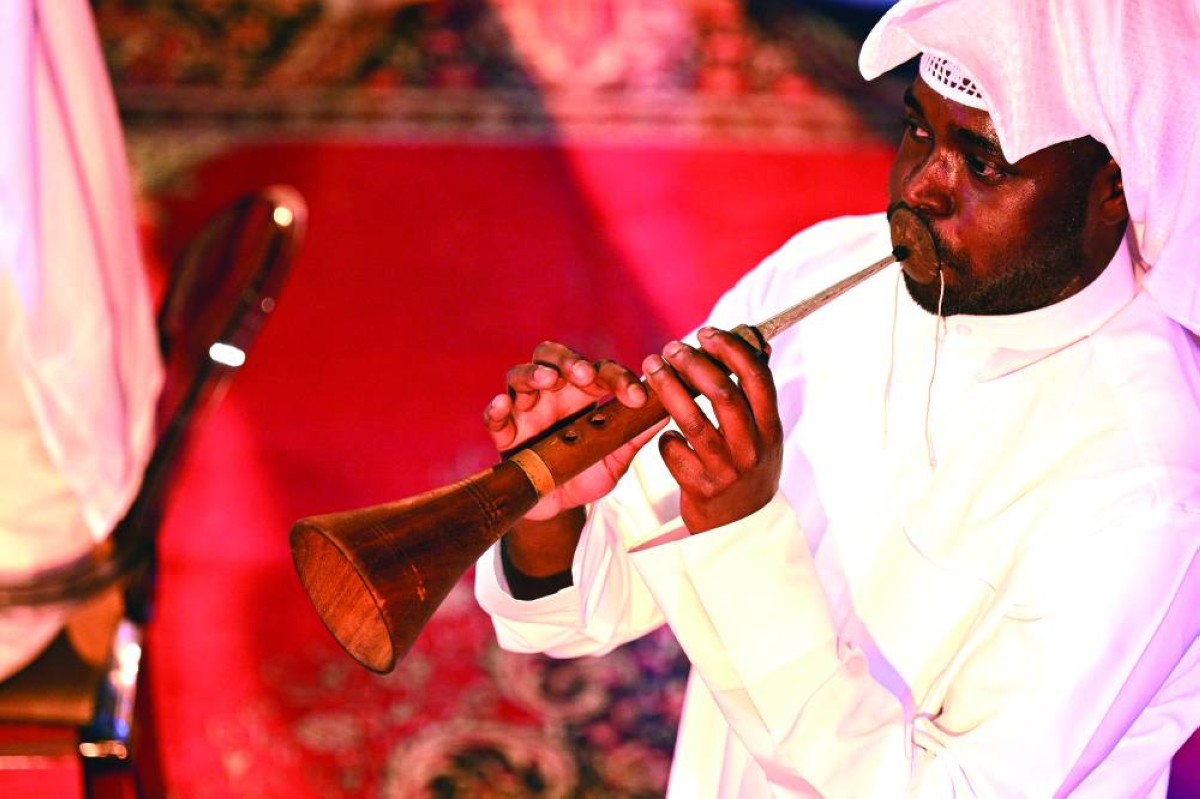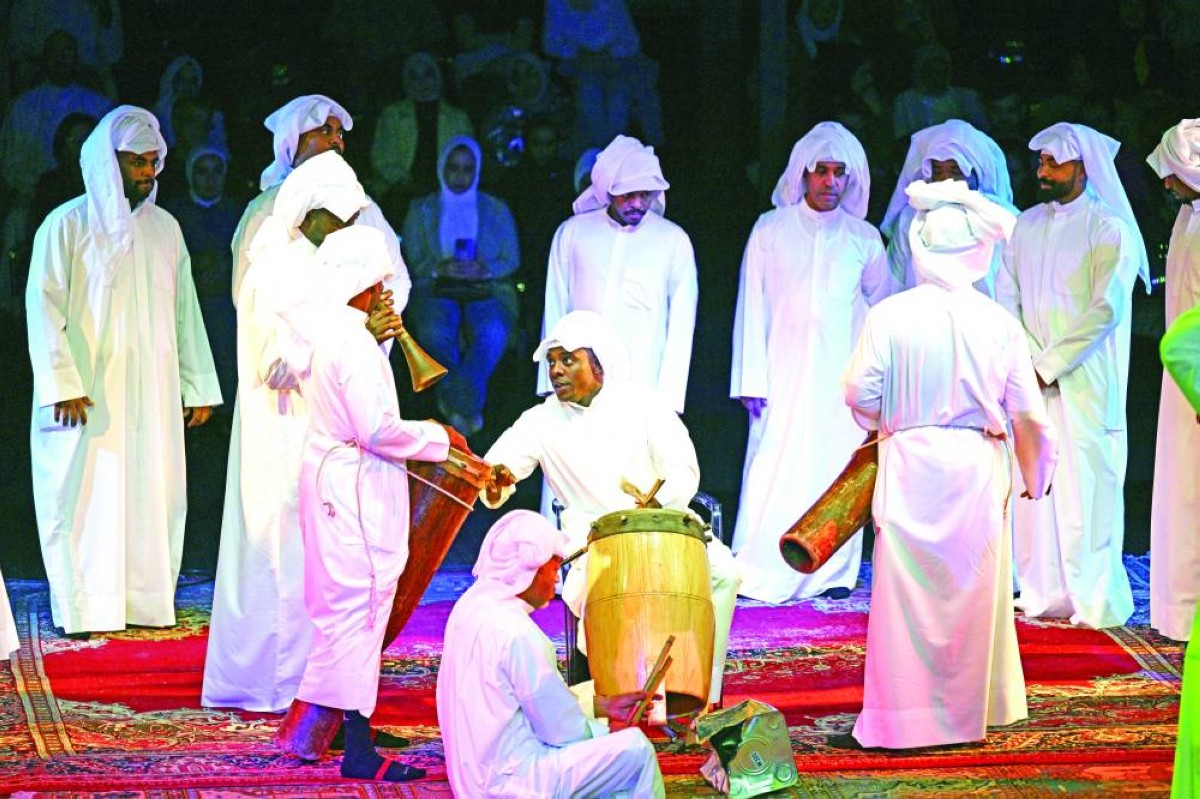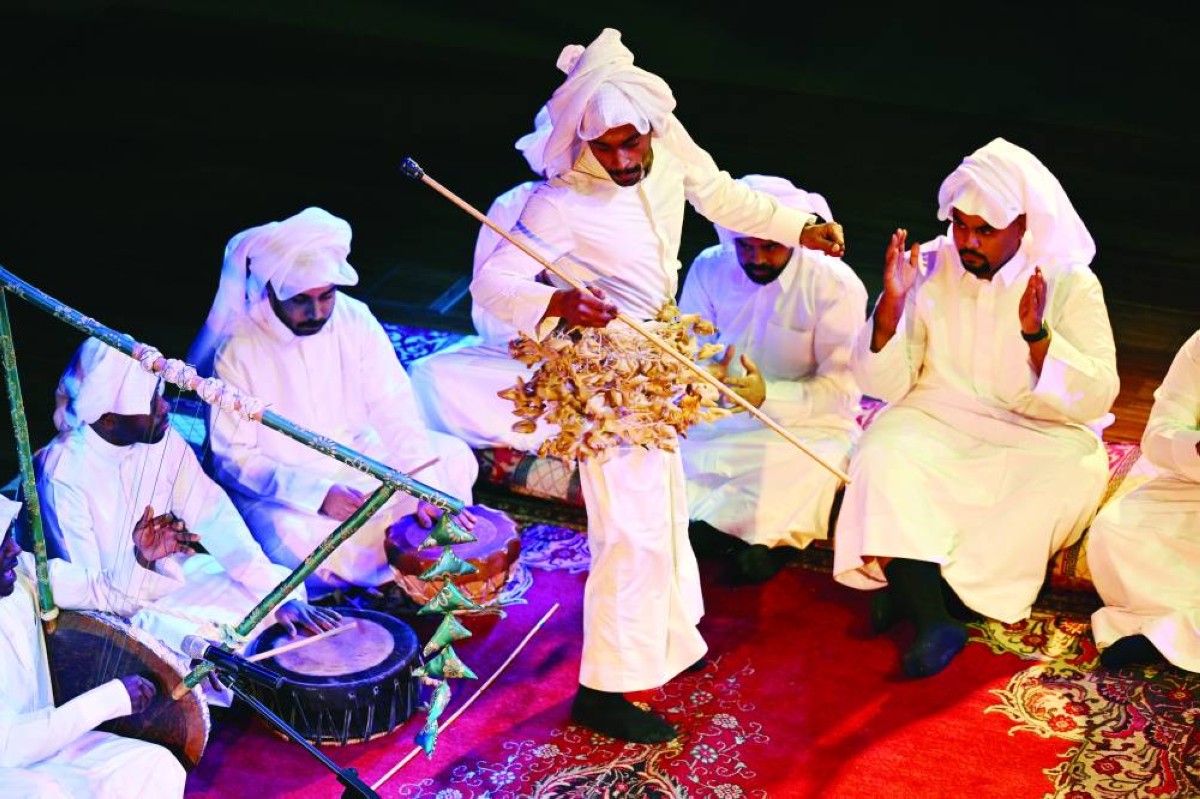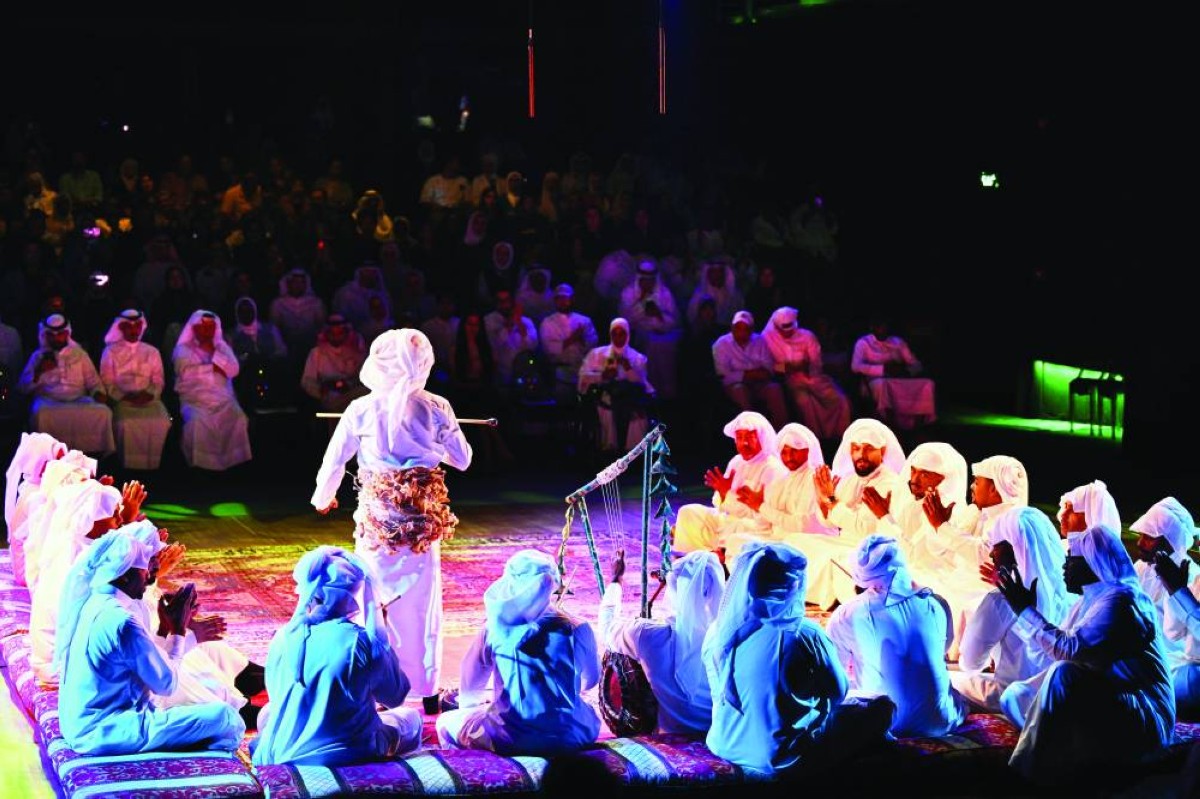The sounds of music and singing filled Yarmouk Cultural Centre - rhythmic drums and a melancholic flute took the audience to a part of Kuwait’s cultural heritage that’s more than 100 years old. Performing in front of tens of people on Wednesday evening, Kuwaiti Saleh Al-Marjan band brought to life the traditional Kuwaiti arts of the liwa and tanboura. Liwa is a traditional dance of African origin performed across the Arabian Gulf, mainly within communities of descendants of people from the Swahili Coast (Tanzania and Zanzibar). Despite adapting to the Arabian Gulf environment, the liwa has retained its overall rhythm and includes some Swahili phrases in its lyrics.
The tanboura is also a dance of African origins, with roots in Nubia. Eventually, it made its way to Yemen, where it became part of the Gulf coast community’s heritage. The art form arrived in Kuwait through African migrants 150 years ago, according to historians and artists, such as Yusuf Al-Doukhi. Back in the day, the tanboura was a staple at celebrations and festivals, with performers moving from house to house, entertaining sheikhs and merchants during community events.






Both the liwa and tanboura are performed to the rhythm of drums. While the liwa traditionally relies on the flute for melody, the tanboura is characterized by the use of a unique string musical instrumental, also called tanboura. Traditionally, the tanboura has six strings made from animal intestines, producing a deep, resonant sound.
The musician typically uses a piece of a bull’s horn to play the instrument. The tanboura dance is also unique, with dancers wrapping a strip of fabric adorned with shells, or traditionally goat hooves, around their waist. As they move to the rhythm, they produce additional rhythmic sounds that harmonize with the tanboura. Elements of the two arts come together to create a musical experience that reflects the cultural heritage of Kuwait and the region.

